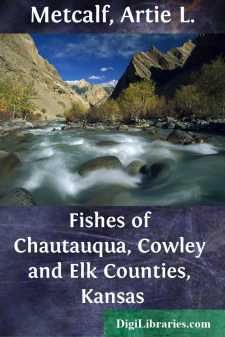Categories
- Antiques & Collectibles 13
- Architecture 36
- Art 48
- Bibles 22
- Biography & Autobiography 813
- Body, Mind & Spirit 142
- Business & Economics 28
- Children's Books 17
- Children's Fiction 14
- Computers 4
- Cooking 94
- Crafts & Hobbies 4
- Drama 346
- Education 46
- Family & Relationships 57
- Fiction 11829
- Games 19
- Gardening 17
- Health & Fitness 34
- History 1377
- House & Home 1
- Humor 147
- Juvenile Fiction 1873
- Juvenile Nonfiction 202
- Language Arts & Disciplines 88
- Law 16
- Literary Collections 686
- Literary Criticism 179
- Mathematics 13
- Medical 41
- Music 40
- Nature 179
- Non-Classifiable 1768
- Performing Arts 7
- Periodicals 1453
- Philosophy 64
- Photography 2
- Poetry 896
- Political Science 203
- Psychology 42
- Reference 154
- Religion 513
- Science 126
- Self-Help 84
- Social Science 81
- Sports & Recreation 34
- Study Aids 3
- Technology & Engineering 59
- Transportation 23
- Travel 463
- True Crime 29
Fishes of Chautauqua, Cowley and Elk Counties, Kansas
by: Artie L. Metcalf
Description:
Excerpt
INTRODUCTION
Aims of the distributional study here reported on concerning the fishes of a part of the Arkansas River Basin of south-central Kansas were as follows:
(1) Ascertain what species occur in streams of the three counties.
(2) Ascertain habitat preferences for the species found.
(3) Distinguish faunal associations existing in different parts of the same stream.
(4) Describe differences and similarities among the fish faunas of the several streams in the area.
(5) Relate the findings to the over-all picture of east-west distribution of fishes in Kansas.
(6) List any demonstrable effects of intermittency of streams on fish distribution within the area.
Cowley and Chautauqua counties form part of the southern border of Kansas, and Elk County lies directly north of Chautauqua. The following report concerns data only from those three counties unless otherwise noted. They make up an area of 2,430 square miles having a population of 50,960 persons in 1950 (55,552 in 1940, and 60,375 in 1930). The most populous portion of the area is western Cowley County where Arkansas City with 12,903 inhabitants and Winfield with 10,264 inhabitants are located. Each of the other towns has less than 2,000 inhabitants. In the Flint Hills, which cross the central portion of the area surveyed, population is sparse and chiefly in the valleys.
Topographically, the area is divisible into three general sections: the extensive Wellington formation and the floodplain of the Arkansas River in western Cowley County; the Flint Hills in the central part of the area; and the "Chautauqua Hills" in the eastern part. The drainage pattern is shown in Figure 1.
The Wellington formation, which is devoid of sharp relief, borders the floodplain of the Arkansas River through most of its course in Cowley County. A short distance south of Arkansas City, however, the Arkansas is joined by the Walnut River and enters a narrow valley walled by steep, wooded slopes. Frye and Leonard (1952:198) suggest that this valley was originally carved by the Walnut River, when the Arkansas River flowed southward west of its present course. They further suggest that during Nebraskan glacial time the Arkansas probably was diverted to the rapidly downcutting Walnut. The Arkansas River has a gradient of 3.0 ft. per mile in Cowley County. This gradient and others cited were computed, by use of a cartometer, from maps made by the State Geological Survey of Kansas and the United States Geological Survey.
Northward along the Walnut, steep bluffs and eroded gulleys characterize both sides of the river, especially in southern Cowley County. Two massive limestones, the Fort Riley and the Winfield, form the bluffs in most places. The well-defined Winfield limestone is persistent on the west bank of the river across the entire county. The Walnut has only a few small tributaries in the southern half of Cowley County (Fig. 1). In the northern half, however, it is joined from the east by Timber Creek and Rock Creek. Timber Creek drains a large level area, formed by the eroded upper portion of the Fort Riley limestone, in the north-central portion of the county....


